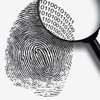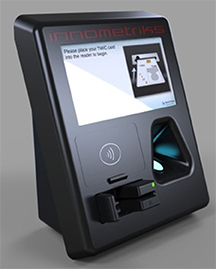
Leveraging Lumidigm Sensors with Innometriks New Rhino Touch Makes Self Service Validation Easy
 Lumidigm today announced that Innometriks has embedded Lumidigm’s V-Series multispectral fingerprint sensors into its new Rhino Touch reader that will be introduced at the ISC West Show, booth 22126 in the Sands Convention Center in Las Vegas, April 10-12. The new Rhino Touch can be deployed as a self-service CAC/TWIC/PIV identification validation device that provides self-guided and fully-authenticated enrollment into a facility access control system via a CAC, TWIC or PIV card. As such, the new Rhino Touch can be a vetting station that provides complete validation of a CAC, TWIC or PIV credential – contact, contactless or magnetic stripe – including all card signatures, certificates and personal information.
Lumidigm today announced that Innometriks has embedded Lumidigm’s V-Series multispectral fingerprint sensors into its new Rhino Touch reader that will be introduced at the ISC West Show, booth 22126 in the Sands Convention Center in Las Vegas, April 10-12. The new Rhino Touch can be deployed as a self-service CAC/TWIC/PIV identification validation device that provides self-guided and fully-authenticated enrollment into a facility access control system via a CAC, TWIC or PIV card. As such, the new Rhino Touch can be a vetting station that provides complete validation of a CAC, TWIC or PIV credential – contact, contactless or magnetic stripe – including all card signatures, certificates and personal information.
Up until now, a trained operator was required to complete this task. The Rhino Touch brings together a comprehensive blend of technologies along with an intuitive user interface. Now, organizations can complete the validation in a self-service format, reducing labor costs and increasing ROI, while maintaining the chain of trust throughout the process.
“The market has been looking for a way to be more efficient at vetting these complex credentials,” explained John Cassise, Innometriks CEO. “The unique ability of Lumidigm’s sensors to get a great image of the finger the first time, every time is critical for making a truly intuitive biometric device.”
A large, seven-inch touchscreen provides a kiosk-level user interface to simplify instruction and minimize a user’s learning curve. Expanding on many key features of the successful Rhino reader, the Rhino Touch can be wall-mounted, used on a desktop or positioned on a free-standing post.
“We’re excited to provide Innometriks’ new Rhino Touch with a solution that conventional fingerprint technologies simply cannot deliver,” added Bill Spence, Lumidigm vice president for North America, Europe and Australia. “Lumidigm’s ability to get a great fingerprint image every time, regardless of the conditions, has significantly expanded the range of applications and environments where biometrics can be successfully deployed and scaled in the real world."